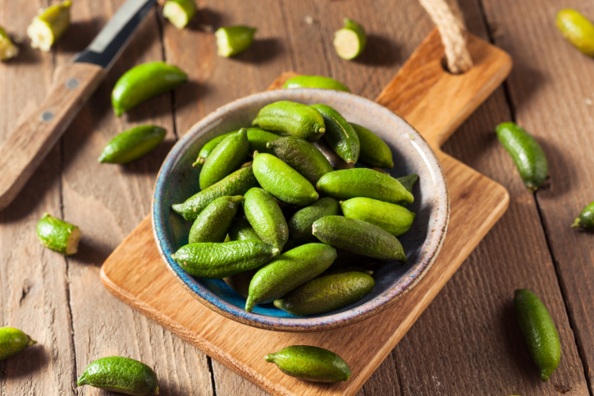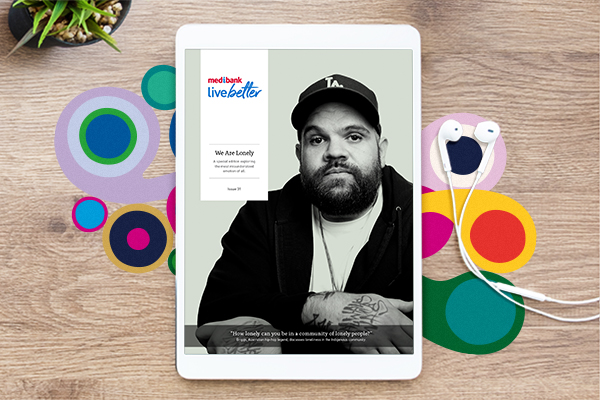-
Our Aboriginal and Torres Strait Islander population has thrived for thousands of years on bush food, but only recently are we beginning to see the likes of finger limes and wattle seed appear on our culinary menus. Here’s why we need to be growing and eating more native ingredients.
Foodies around the country are tapping into our native bounty. Dine at Melbourne’s Attica restaurant and you can expect items like oysters in paperbark or croc fat caramel. Meanwhile, in Perth, pop-up restaurant Fervor is dishing up shaved bush food roots, tree ants, and lemon myrtle emulsion.
The movement goes beyond the restaurant industry. South Australian distillery, applewood, creates gins infused with saltbush, finger limes, and pepperleaf. Even non-alcoholic producers are joining in. Queensland based, and Indigenous-owned, company Sobah produces mock craft beers that include ingredients such as lemon aspen, wattle seed, and pepperberry.
While native ingredients are taking off in the food and drink industries, the rest of us still have some catching up to do. Melbourne shop owner, Nornie Bero, is out to change that.
“My whole ethos is to get native ingredients into every Australian kitchen.” She says.
Nornie, a Torres Strait Islander woman, owns Mabu Mabu. A shop that stocks an array of Indigenous Australian sauces and spices. For every purchase, she provides customers with a snippet of information on what they should be using the ingredient for.
Cinnamon myrtle, for example, could be used to flavour cakes, biscuits, or on your morning yoghurt. Desert herbs make for a delicious meat rub and can be added to koftas, meatballs or straight onto a leg of lamb. And pepperberries are a powerful substitute for pepper (so it’s best used in moderation).
The education around how to use native ingredients can be traced back to ancient knowledge systems. Indigenous-owned business, Warndu, pays testament to this knowledge with their native food app.
The app allows us to explore different ingredients and learn about where they come from, how they taste, their nutritional properties, and how the Aboriginal and Torres Strait Islander people use them as food or medicine.
Bloodroot for example is a striking red bulb vegetable from Western Australia similar in flavour to curry leaves, capsicums or chillies. It packs a punch and is used by the Noongar people as a food source and remedy to reduce symptoms of dysentery.
The value of this ancient knowledge however is not equally represented by Indigenous Australians’ share of the market.
The bush foods industry is worth approximately $20 million but according to First Nations Bushfood & Botanical Alliance Australia, Indigenous Australians represent fewer than 2% of the providers across the supply chain. The Alliance also acknowledged that nearly 98% of Aboriginal landowners aspire to be leaders in the native food industry.
Nornie recognises the importance of representing communities in job lines wherever possible.
“They are the ones who know their stuff, how to look after the crops, how to grow it, and how to ensure we have an abundance of it if we want to be doing wild harvests.”
With the inevitable threat of climate change to our planet, wild harvests could be on the cards to help rebuild and nurture our unique environment.
As Bruce Pascoe puts it "Aboriginal domesticates do not require any more moisture than the Australian climate provides, no more fertiliser than our soils already contain and, as they are adapted to Australian pests, they need no pesticides."
Understanding the value, quality, and knowledge of Indigenous Australian food helps us gain a deeper understanding and appreciation for the rich history and cultures of Aboriginal and Torres Strait Islander peoples, and teaches us how to care for our environment.
As Nornie says, “We are a country that has all these amazing natural ingredients, we should be helping cultivate that. That could be one of the best things we could do.”
The rise of Indigenous Australian foods


Explore new perspectives with Live Better magazine.
Around a third of Australians experience problematic levels of loneliness, but the emotion is still so misunderstood. Find out what loneliness really looks like, and explore unique ways to connect in this special edition of Live Better magazine.